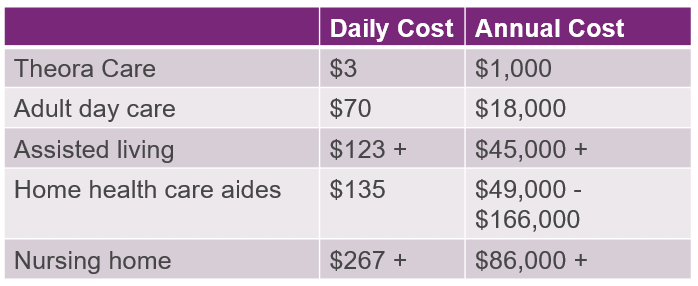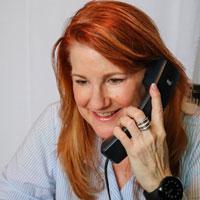Aug 06, 2018
Costs at the Point of Care
In our last blog we talked about the big numbers – what Alzheimer’s care costs family caregivers both personally and out-of-pocket. Next, let’s focus on the small numbers – the numbers that can and will hit every family struggling with caring for a person with Alzheimer’s. Or, as my economics professor used to say after presenting a big concept, “Turn to your classmate and personalize this in an example.” Let’s get personal.
The Alzheimer’s Association has a wonderful webpage on the stages of Alzheimer’s here.
Each stage requires a different level of care, and every individual progresses at their own pace. I was a caregiver for my mother with dementia, and as the level of care she needed progressed – not very long ago – there really wasn’t any technology at the point of care that we could use. We had to utilize people at all points in time, starting with friends and family, moving to in-home care with increasing hours as she needed more help, and finally into assisted living. Of course, the costs escalated. Every year, Genworth, the biggest long term care insurance provider, publishes a survey of the costs of various types of care. The costs in the chart below are national averages – depending on where you live, costs can be substantially higher.
 .
.
Source: Genworth
It becomes clear why many families cannot afford caring for an elder. But, with technology, you can help reduce some of those costs, and at the same time provide better care. For example, our products, Theora Connect and Theora Link, are designed to allow care recipients to safely stay in their own homes longer, which is their overwhelming preference. These affordable solutions monitor their location, condition and provide direct communications between the caregiver and the care recipient. This allows caregivers who are remote – as many family caregivers are still employed themselves, for example – to understand more about their care recipient and see when they may need extra help: has a care recipient wandered outside of a safe area, or perhaps they can’t use a smartphone anymore but the caregiver wants to check in regularly. Until technology helped out, a family caregiver had to either do it themselves, use adult day care,assisted living or professional home care aides, all of which can add up quickly for those of us on a budget.
On the other hand, Theora Care’s useful technology was built to be powerful and affordable – at less than $3 a day, not $70-$135 a day. Of course, our technology doesn’t take the place of full-time care, but it does help especially in the early days to keep an elder safely in their home so that these other forms of care can be postponed or phased in more gradually. Imagine if you could delay the cost of home care for another month, or more? A savings of over $4,000. Or, you could phase it in more gradually perhaps using professional caregivers for only part-time and save $2,000 a month? The financial burden changes as the chart below shows.

This doesn’t mean you are sacrificing quality of care – technology can enhance quality of care. We are all for keeping your elder happy and you happy, and financially well too. We are caregivers, too!
We’ll speak more on how technology can improve the quality of care in future blogs, with real-life examples.
Author: Shelley Symonds

